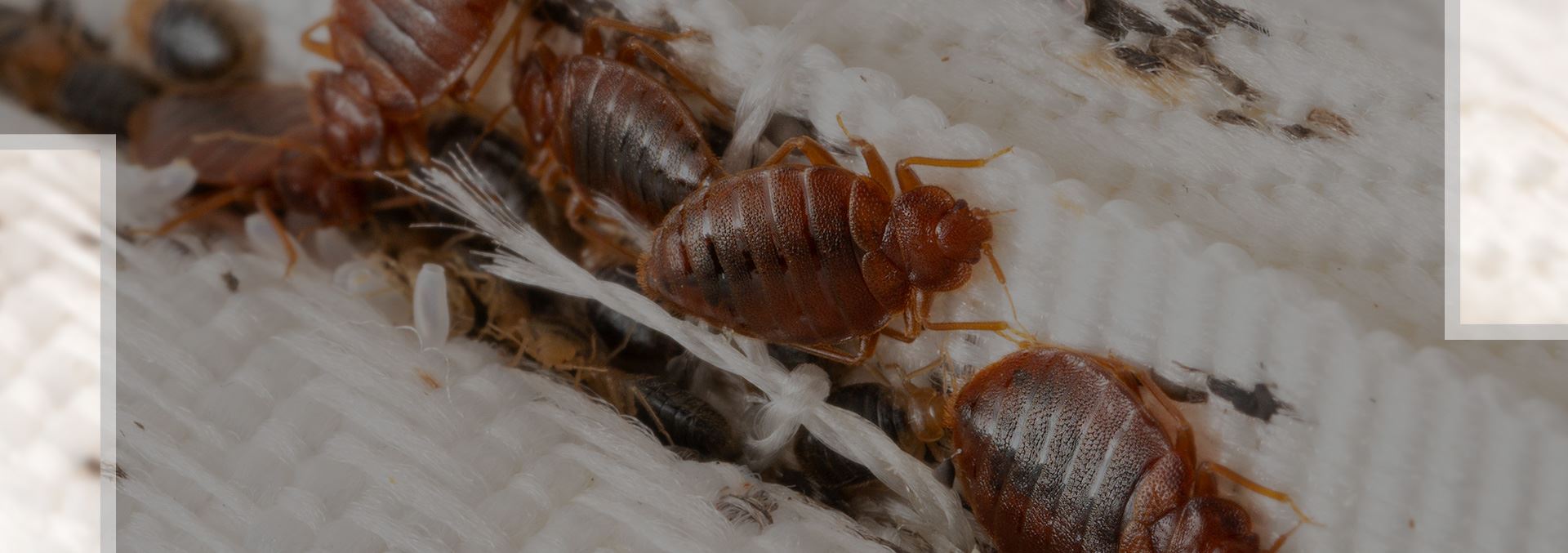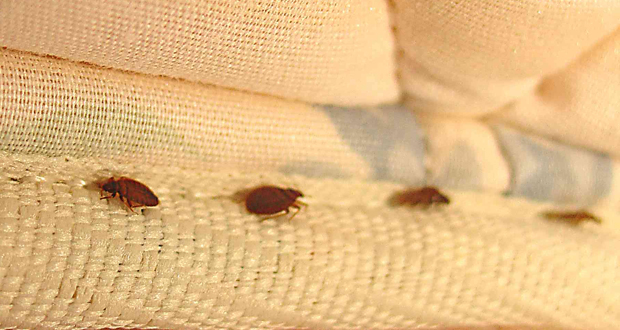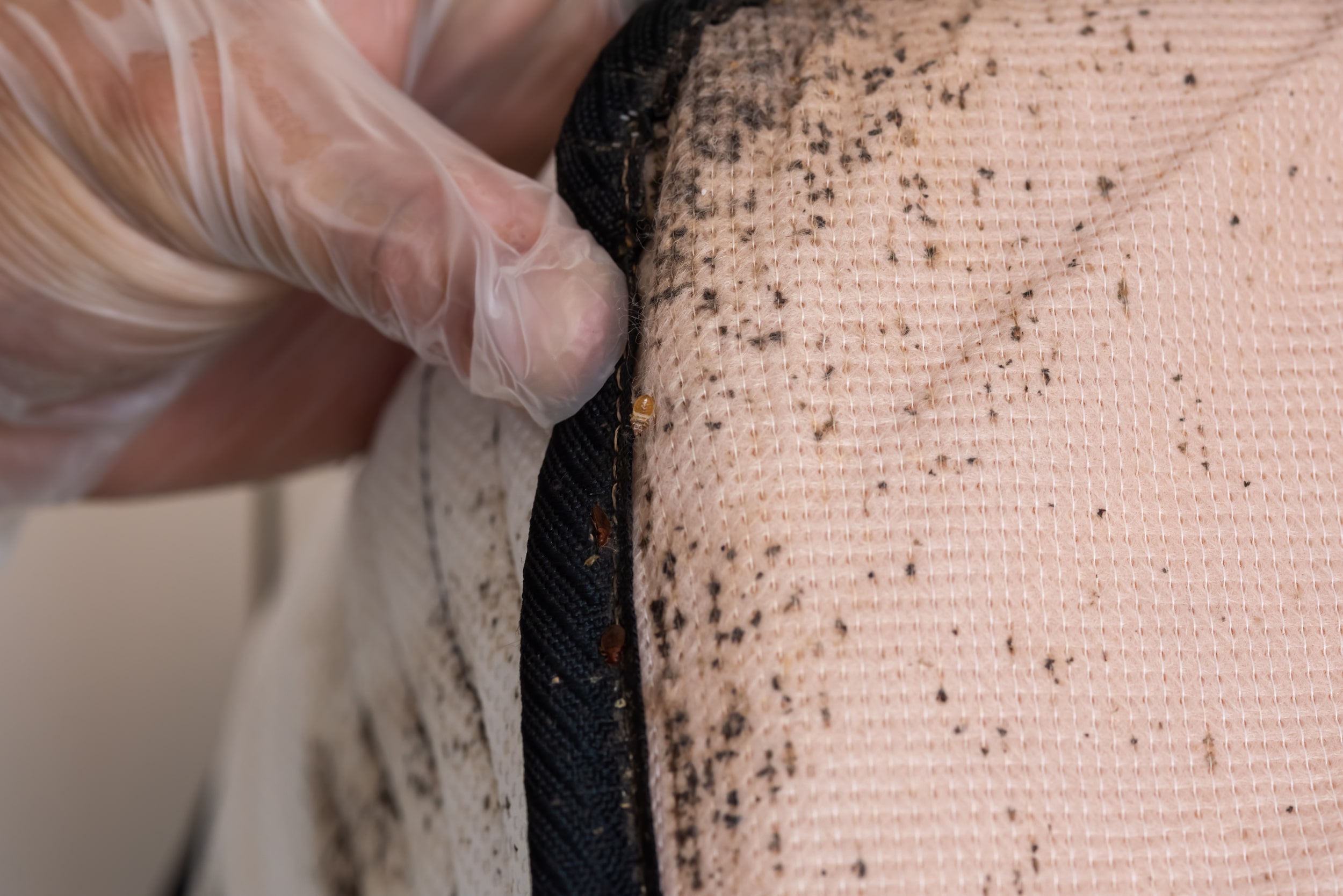Florida’s subtropical environment—known for warm weather, moderate winters, and plentiful humidity—provides a highly favorable setting for bed bugs. These small, resilient insects survive by feeding on human blood, often undetected. In Greenacres and across the Sunshine State, bed bugs can invade homes, apartments, hotels, offices, and more, creating stress and discomfort for those affected. Because they hide in soft furnishings and remain active at night, bed bugs can multiply quickly before anyone notices a problem.
This service page discusses why bed bugs are so prevalent in Florida, the signs of an infestation, and why hiring a professional bed bug exterminator is the most dependable way to address these insects. While you might attempt do-it-yourself strategies, bed bugs’ adaptability and rapid breeding often render these efforts inadequate. By understanding bed bugs’ habits, life cycle, and control options, you can better protect your household or business from a persistent and disruptive pest.
Why Bed Bugs Flourish in Florida

1. Mild, Subtropical Climate
Florida’s climate remains warm throughout much of the year, rarely dipping to frosty temperatures. Because bed bugs thrive in conditions where they have easy access to hosts and moderate indoor temperatures, Florida’s warmth offers them a nearly year-round breeding season. Greenacres, located in Palm Beach County, shares in this climate benefit. Even in winter months, heated interior spaces maintain suitable temperatures for bed bug activity, ensuring these pests stay active and continue to feed.
2. High Population Density and Travel
Greenacres is part of a larger metropolitan area with plenty of residences, businesses, and tourist movement. Bed bugs commonly hitch rides on personal belongings—such as luggage, purses, or clothing—making them adept travelers. If you or someone in your household travels frequently, visits public spaces, or purchases secondhand items, bed bugs can easily catch a ride back home. In multi-unit housing, such as apartments or condos, bed bugs spread from one unit to another through shared walls or hallways.
3. Adaptability to Human Environments
Despite their name, bed bugs dwell in more places than just mattresses. They nest in cracks of wooden furniture, seams of couches, behind baseboards, in picture frames, or even in electronic devices. Their small, flat bodies allow them to squeeze into tight crevices. Because Florida’s housing often features air conditioning and cushioned furnishings, bed bugs find plenty of hidden spots to feed undisturbed.
4. Multiple Infestation Sources
There’s a misconception that bed bugs only appear in unclean environments. In reality, bed bugs seek a reliable food supply—human hosts—rather than filth. Therefore, even impeccably clean residences can face infestations if bed bugs enter. Shared facilities, like laundry rooms or storage units, can also serve as indirect transfer points. Once bed bugs settle into a new space, they breed rapidly. A female can lay numerous eggs weekly, enabling a small colony to expand drastically in just a few months.
Telltale Signs of Bed Bugs
1. Red, Itchy Bites
One of the most noticeable indicators is waking up to small, itchy red welts on areas of skin exposed while you sleep. These bites often appear in lines or clusters because bed bugs tend to feed in one area before moving. Some individuals experience a strong reaction to bites, while others show little or no response, allowing bed bug populations to grow unnoticed for longer.
2. Dark Stains or Specks
Bed bugs often leave behind dark or rusty spots on sheets and mattresses. These could be blood smears from bites or excrement spots (also referred to as “flea dirt” in other pests, but specifically bed bug droppings here). If you notice unusual black or red flecks that smear into a reddish stain when rubbed with water, bed bugs may be to blame. Thoroughly checking mattress seams and pillowcases can reveal such signs.
3. Shed Skins and Eggshells
As bed bugs progress through multiple nymph stages, they molt, leaving behind translucent shells. If you find these small, exoskeleton-like remnants near headboards, inside box springs, or along baseboards, it suggests active feeding and growth. White or pale eggs, about the size of a pinhead, can also appear in mattress seams or furniture crevices—clearly pointing to bed bug reproduction.
4. Musty Odor
In larger infestations, bed bugs emit a characteristic, musty-sweet odor due to pheromones. Although not as reliable as seeing physical evidence, an unexplained, somewhat unpleasant smell—especially near sleeping quarters—could reinforce suspicions.
5. Live Bed Bug Sightings
Adult bed bugs are roughly the size of an apple seed, oval, and typically brownish—though they become a darker red-brown after feeding. Spotting a live bed bug scurrying on bedding, couches, or walls (often at night) definitely merits further inspection. Nymphs are smaller and paler, making them harder to see, but their presence is equally concerning.
Risks of Ignoring Bed Bugs
1. Rapid Population Growth
Bed bugs reproduce quickly. A single female can lay numerous eggs weekly, which hatch into nymphs that mature in a matter of weeks under favorable conditions. Thus, a light infestation quickly becomes unmanageable if left untreated. The longer you wait, the more complex and expensive eradication typically becomes.
2. Disrupted Sleep and Anxiety
Realizing that insects feed on you or your family while you sleep can create immense stress and insomnia. Many people experience psychological strain, constantly checking bedding or living in fear of new bites. Over time, this disruption to normal rest and mental well-being can affect overall health.
3. Potential Health Concerns
Although bed bugs aren’t widely known to transmit diseases, their bites can produce itchy welts or allergic reactions in some individuals. Intense scratching might lead to open wounds vulnerable to secondary infections. Additionally, the psychological toll of an infestation—stress, fatigue, or anxiety—can indirectly affect personal health.
4. Impact on Property Value and Reputation
A bed bug infestation in a home, apartment building, or hospitality setting can tarnish a property’s reputation. Hotels, for instance, can suffer from negative reviews or lost bookings. In residential situations, bed bugs might complicate rental agreements, real estate transactions, or cause friction among neighbors if the infestation spreads.
5. Spread to Other Spaces
In multi-family housing, bed bugs travel between units via shared walls, wiring, or plumbing openings. A single infested condo or apartment in Greenacres can quickly lead to building-wide infestations. This communal aspect intensifies the need for quick, coordinated action.

Why a Professional Exterminator Is Crucial
1. Accurate Identification
Misidentifying bed bugs can lead to ineffective or wasteful treatments. A skilled bed bug exterminator inspects the property carefully—often checking seams, cracks, baseboards, and furniture. They differentiate bed bugs from similar pests (like carpet beetles or fleas), ensuring the correct removal strategy is used.
2. Comprehensive, Multi-Stage Treatment
DIY treatments often kill only the active bed bugs, leaving eggs or hidden clusters untouched. Professionals employ a multi-stage approach that addresses adult bugs, nymphs, and eggs. Methods such as heat treatments, targeted insecticide applications, and vacuuming high-risk areas help break bed bugs’ life cycle fully.
3. Specialized Equipment and Techniques
Bed bugs hide in deep crevices or behind walls, where common sprays may not penetrate. Professional exterminators use advanced methods, such as high-heat chambers, steam devices, or specialized insecticides. Some also use canine detection teams trained to sniff out bed bugs in furniture or walls.
4. Reduced Chemical Exposure Risks
Misusing pesticides can endanger people and pets. Certified exterminators select the right products and apply them properly to minimize exposure while maximizing efficacy. They often target cracks, baseboards, and hidden corners, avoiding broad, indiscriminate spraying of living areas. This precision fosters safer living conditions during and after treatment.
5. Follow-Up and Prevention
Because bed bug eggs can hatch weeks later, exterminators typically recommend follow-up visits. If any stragglers emerge or a few hidden eggs remained, a second treatment kills the new generation before they spread. Additionally, professionals advise on prevention—like sealing cracks, encasing mattresses, or monitoring rooms—to deter re-infestation.
Typical Methods for Bed Bug Treatments
1. Inspection and Mapping
An exterminator starts by checking beds, couches, rugs, and baseboards for signs of bed bug activity. Using flashlights, magnifiers, or detection dogs, they identify hotspots—like mattress seams, box springs, behind headboards, or inside nightstands. Mapping these zones shapes the forthcoming strategy, ensuring the entire infestation is targeted.
2. Heat Treatments
Raising indoor temperatures above 120°F for several hours kills bed bugs and their eggs in a single pass. Technicians may use industrial heaters and fans to circulate hot air. Because heat penetrates furnishings, walls, and belongings better than many sprays, it’s highly effective. However, the property must be evacuated during the process, and certain items might require removal if they can’t withstand high temperatures.
3. Chemical Applications
Some professionals opt for liquid or dust insecticides along baseboards, cracks, and bed frames. Spot treatments in furniture joints or hidden corners ensure bed bugs in those areas are exposed. Insect Growth Regulators (IGRs) prevent nymphs from maturing or reproducing, further reducing bed bug populations. Occupants may need to temporarily vacate while sprays dry, but once safe, these treatments provide lasting residual effects.
4. Vacuuming and Steam
Vacuuming with a HEPA filter helps remove adult bugs, eggs, and debris before or after chemical applications. Steamers produce high-heat vapor that kills bed bugs on contact in tight crevices or delicate fabrics. Combining vacuuming and steam with residual treatments covers multiple angles, reducing the chance of survivors.
5. Mattress and Box Spring Encasements
Sealing mattresses and box springs in bed bug–proof encasements traps any remaining insects inside, cutting off their food supply. This also prevents new bugs from reaching sleeping humans. Continuous use of encasements remains an effective line of defense against missed eggs or newly introduced bed bugs.

Service Area: Greenacres
Greenacres is a vibrant, family-friendly city in Palm Beach County, known for its parks, residential communities, and easy access to broader metropolitan amenities. With mild weather almost all year, households in Greenacres remain at risk for bed bug invasions. Frequent travel, secondhand furniture purchases, and close living quarters all increase the chance that bed bugs gain entry. A professional bed bug exterminator serving Greenacres understands the local climate and building types, ensuring methods are tailored for this unique region.
Whether you live in a spacious single-family home near the city’s parks or manage a multi-unit property close to shopping centers, bed bugs can disrupt daily life in an otherwise peaceful community. Prompt detection and specialized treatments address these pests before they spread widely. From thorough inspections to multi-stage elimination and prevention strategies, quality bed bug control in Greenacres helps maintain the city’s high standard of living, minimizing stress and preventing escalation of infestations.
Why Our Bed Bug Treatments Excel
1. Florida-Based Expertise
Years of handling bed bug cases in a subtropical environment inform our extermination strategies. We account for the constant warmth, local building designs, and household habits that affect bed bug survival. By applying region-specific knowledge to Greenacres properties, we optimize results and reduce the chance of re-infestation.
2. Detailed Inspections and Customized Plans
We begin with a top-to-bottom assessment of the premises—mattresses, living rooms, closets, or storerooms—pinpointing the heaviest infestations. Drawing on that data, we design a plan that may involve heat treatments, pesticides, or combined tactics to eradicate bed bugs in every life stage.
3. Emphasis on Safety and Minimal Disruption
We’re mindful that families, employees, or guests must continue daily activities. Our bed bug exterminator professionals adhere to best practices, informing you of any temporary relocation needs, reentry guidelines, or protective measures. The goal is decisive bed bug removal without upending normal routines more than necessary.
4. Ongoing Education and Support
After the immediate infestation is cleared, we don’t simply walk away. We share tips to help keep bed bugs at bay—like encasing mattresses, being cautious about secondhand items, and sealing cracks around baseboards. Should you suspect any resurgence, we’re ready for follow-up inspections or treatments.
5. Quick Response and Long-Term Relief
Time matters when dealing with bed bugs: the sooner they’re addressed, the fewer rooms or belongings become infested. We prioritize prompt appointments for Greenacres residents, employing methods that stop bed bugs at all life stages and ensure sustained relief. Our integrated approach lays the groundwork for a comfortable, pest-free environment.
Next Steps
If you’ve noticed unexplained bites, spotted tiny black specks on sheets, or seen small bugs in seams of furniture, it’s important to tackle the situation quickly. Contact us to learn more or schedule your service. Early intervention curbs bed bug populations before they proliferate further, reducing the complexity and cost of treatment.
Our approach targets the entire bed bug life cycle, using proven measures—like heat applications, insecticides, and thorough follow-up—to eliminate current infestations and deter new ones. Whether you manage an apartment complex in Greenacres, run a local business, or own a home, a skilled bed bug exterminator can restore your peace of mind and protect your property’s reputation. Let us handle the details so you can rest easier in a bed bug–free space.
Maintaining a Bed Bug–Free Environment
- Inspect Secondhand Items Carefully
Before bringing used furniture, clothing, or décor into your home, examine seams, cushions, and cracks. Steam or wash items in hot cycles if possible. Bed bugs often hide in secondhand merchandise, slipping unnoticed into new locations. - Encasing Mattresses and Box Springs
Invest in bed bug–proof encasements for mattresses and box springs. These zippered covers trap any existing bed bugs and prevent new ones from infiltrating. Inspect covers periodically to ensure no rips or tears. - Regular Vacuuming and Cleaning
Vacuum floors, carpets, upholstered furniture, and bed frames regularly, paying attention to edges and crevices. Dispose of vacuum bags or contents outside your home in sealed plastic. This removes stragglers and eggs that might otherwise hatch or hide. - Sealing Cracks and Crevices
Use caulk or sealant along baseboards, electrical outlets, and window frames to block potential bed bug travel pathways. Even small gaps are enough for bed bugs to move between walls or from adjacent rooms in multi-unit properties. - Be Mindful While Traveling
Inspect hotel beds and furniture for signs of bed bugs, like dark spots or shedding. Keep luggage off floors using stands, and launder all travel clothes in hot water upon returning. This simple precaution limits the chance of importing bed bugs to your living space. - Monitor Sleeping Areas
Keep an eye out for early warning signs: occasional bites, excrement dots on bedding, or minor blood smears. Consider using interceptor cups under bed legs—these traps catch bed bugs attempting to climb, signaling potential low-level activity before it escalates.
By coupling these preventive habits with professional bed bug treatments, Greenacres residents can maintain a bed bug–free environment. Florida’s climate may offer perfect conditions for many pests, but a vigilant strategy—marked by regular inspections, controlled furniture acquisitions, and prompt extermination measures—helps ensure that bed bugs don’t gain a foothold. When each step is followed diligently, you reclaim comfort and security in your home or workplace, free from the worry of waking up to itchy bites or spotting new infestations.
